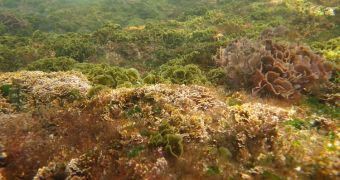In a new scientific study, researchers with the College of Biological Sciences at the University of Minnesota were able to coerce a single-cellular algae into evolving a multicellular structure. Furthermore, the team was able to gain new insight into how organisms use single cells to multiply.
This has been a long-standing question and mystery in evolutionary biology. Complex animals, humans included, can reproduce through the combination and fertilization of single cells, but scientists had yet to glimpse how this is possible, or how the process emerged.
During the research, scientists used a species of algae as a test subject. The team bred only single-cellular algae that sunk quickly to the bottom of a liquid-filled container. For each generation of organisms, they selected the algae that met these criteria and discarded the rest.
After 73 iterations of this evolutionary biology experiment, the team was able to identify a multicellular algae in the test tubes. In addition, these algae were discovered to use single cells to create new offspring. The study may provide a deeper insight into how complex life evolved up to this point.
The research effort was led by William Ratcliff, a postdoctoral fellow at the university, and associate professor Michael Travisano. Details of their work were published in a recent issue of the top scientific journal Nature Communications, Astrobiology Magazine.
“Until now, biologists have assumed that this single-cell bottleneck evolved well after multicellularity, as a mechanism to reduce conflicts of interest among the cells making up the organism,” Ratcliff explains.
“Instead, we found that it arose at the same time as multicellularity. This has big implications for how multicellular complexity might arise in nature, because it shows that this key trait, which opens the door to evolving greater multicellular complexity, can evolve rapidly,” the expert goes on to say.
Travisano says that biology evolutionary still remains one of the most mysterious branches of science, and one that can easily surprise. What the new study basically showed was that organisms can become multicellular even if they do not have multicellular ancestors.
The first question that springs to mind is whether or not it is possible to create multicellular organisms from other single-cellular individuals. A few years ago, Travisano and Ratcliff made the news again, when they proved that yeast can become multicellular, in an experiment similar to this one.

 14 DAY TRIAL //
14 DAY TRIAL //